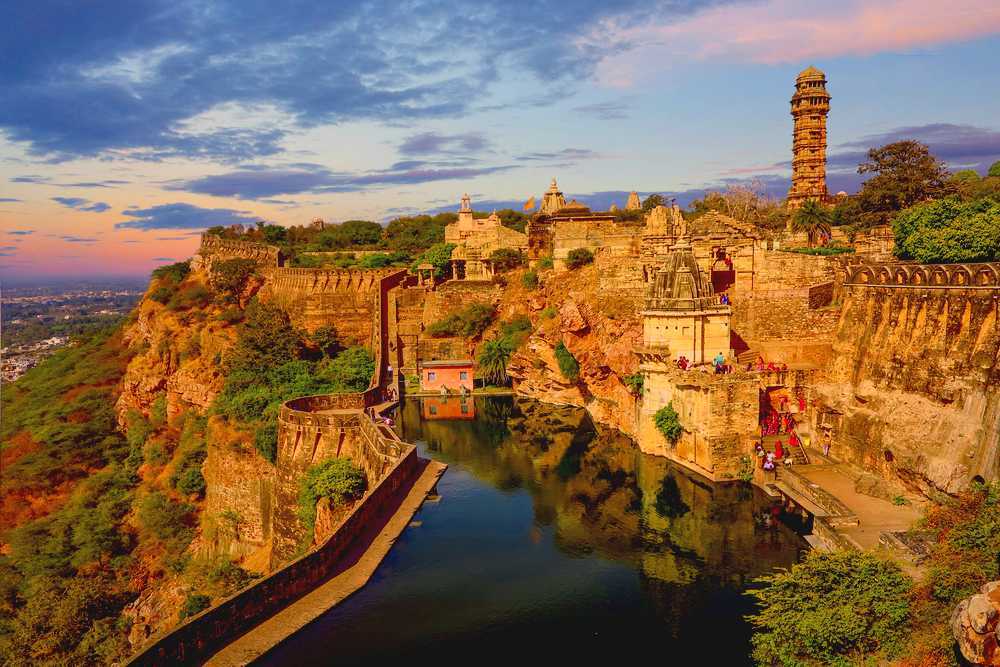Introduction
Chittorgarh, a city steeped of all time and valiant reports, boasts some associated with the most breathtaking
architectural marvels in Rajasthan. Home towards the majestic Chittorgarh Ft, an UNESCO Globe
Heritage Site, the city’s architecture shows a blend associated with Rajput and Mughal influences. From
towering monuments of win to serene wats or temples, Chittorgarh’s structures showcase an
exquisite fusion of war-centric Rajput designs as well as the lavish elegance of Mughal artistry.
This article goes into the system grandeur of Chittorgarh and explores precisely how these two
specific styles have harmoniously coexisted over generations.
Rajput Architecture: Typically the Essence of Chittorgarh
Rajput architecture in Chittorgarh is indicated by fortified constructions, intricate carvings,
great palaces, and religious shrines. The Rajputs, known for their warrior ethos, designed
their buildings using security and appearance in mind.
a single. Chittorgarh Fort: The particular Crown Jewel
Spanning 700 acres in addition to standing atop a new 180-meter-high hill, Chittorgarh Fort is some sort of true marvel
associated with Rajput architecture. Created in the 7th century from the Maurya dynasty, it was later expanded
by Sisodia Rajputs. The fortification features massive gateways (pols), bastions, water
reservoirs, and intricately carved palaces, all built using regionally available sandstone and
marble.
2. Vijay Stambh (Tower involving Victory)
Probably the most well-known structures in Chittorgarh, Vijay Stambh was built by Maharana
Kumbha within the fifteenth century to celebrate his victory within the Sultan of Malwa. This specific nine-
story tower system, adorned with thorough carvings of Indio deities and légende in Sanskrit,
exemplifies Rajput architectural brilliance. The tower provides a panoramic watch of the total
fort complex.
three or more. Rana Kumbha Development
Once the royal residence of Rana Kumbha, this palace stands being a testament in order to the grandeur
regarding Rajput architecture. Featuring sprawling courtyards, balconies, and hidden underground
cellars, the palace is related to a number of legendary stories, like the tragic tale of Rani
Padmini’s jauhar.
4. Meera Temple and Kalika Mata Temple
Chittorgarh is also acknowledged for its temple architecture, which is deeply influenced by Indio
traditions. Meera Brow, dedicated to the popular devotee of Head of the family Krishna, is adorned with
finely toned pillars and idols, while Kalika Matorral Temple features intricate carvings and some sort of
unique pyramidal spire.
Mughal Influence: The particular Artistic Flourish
Although Chittorgarh remained the stronghold of Rajput power, it witnessed significant Mughal
impact, particularly after typically the siege of Chittorgarh by Akbar found in 1568. The Mughal
architectural elements released a new dimensions to the existing Rajput designs.
one. Padmini’s Palace: A Fusion of Styles
Though originally created by Rajputs, Padmini’s Palace underwent alterations under Mughal
concept. The white marbled pavilions, intricate mirror work, and substantial water reservoirs
echo various Rajput sturdiness and Mughal elegance. The idea of water back gardens and even
reflective looks became more popular in Rajput palaces post-Mughal interactions.
2. Jaali Work in addition to Ornate Frescoes
Mughal architecture introduced jaali (lattice) work, domes, and elaborate frescoes into
Chittorgarh’s properties. These ingredients are evident on the renovated sections of the fortification and
palaces, adding a delicate distinction for the robust Rajput structures.
3. Employ of White Marbled and Persian Explications
While Rajput set ups primarily relied about sandstone, Mughals integrated white marble,
developing a visual comparison in several ancient monuments. Persian floral explications and intricate geometric
patterns became some sort of part of Chittorgarh’s architectural landscape during this period.
Water Conservation in addition to Stepwells: A Contributed Architectural Marvel
Each Rajput and Mughal architects emphasized normal water conservation in Chittorgarh’s dry
terrain. The fort has over 84 water systems, including stepwells, ponds, and reservoirs, which in turn
could sustain typically the fort’s population throughout prolonged sieges. click site is 1 this kind of
remarkable structure that showcases the particular ingenuity of medieval hydraulic engineering.
Conclusion
Chittorgarh’s architecture holds being an unique combinations of Rajput resilience and Mughal
processing. While Rajput rulers built grand castles, towering structures, plus magnificent
palaces regarding defense and vips, the Mughals additional intricate artistry and even elegance to these types of
monuments. Today, this specific mixture of architectural designs makes Chittorgarh the awe-inspiring
destination of which offers visitors the glimpse into India’s rich and diverse heritage. Whether a person are an architecture enthusiast, a historical past buff, or some sort of traveler seeking cultural depth,
Chittorgarh promises a journey by means of time like not any other.

Leave a Reply